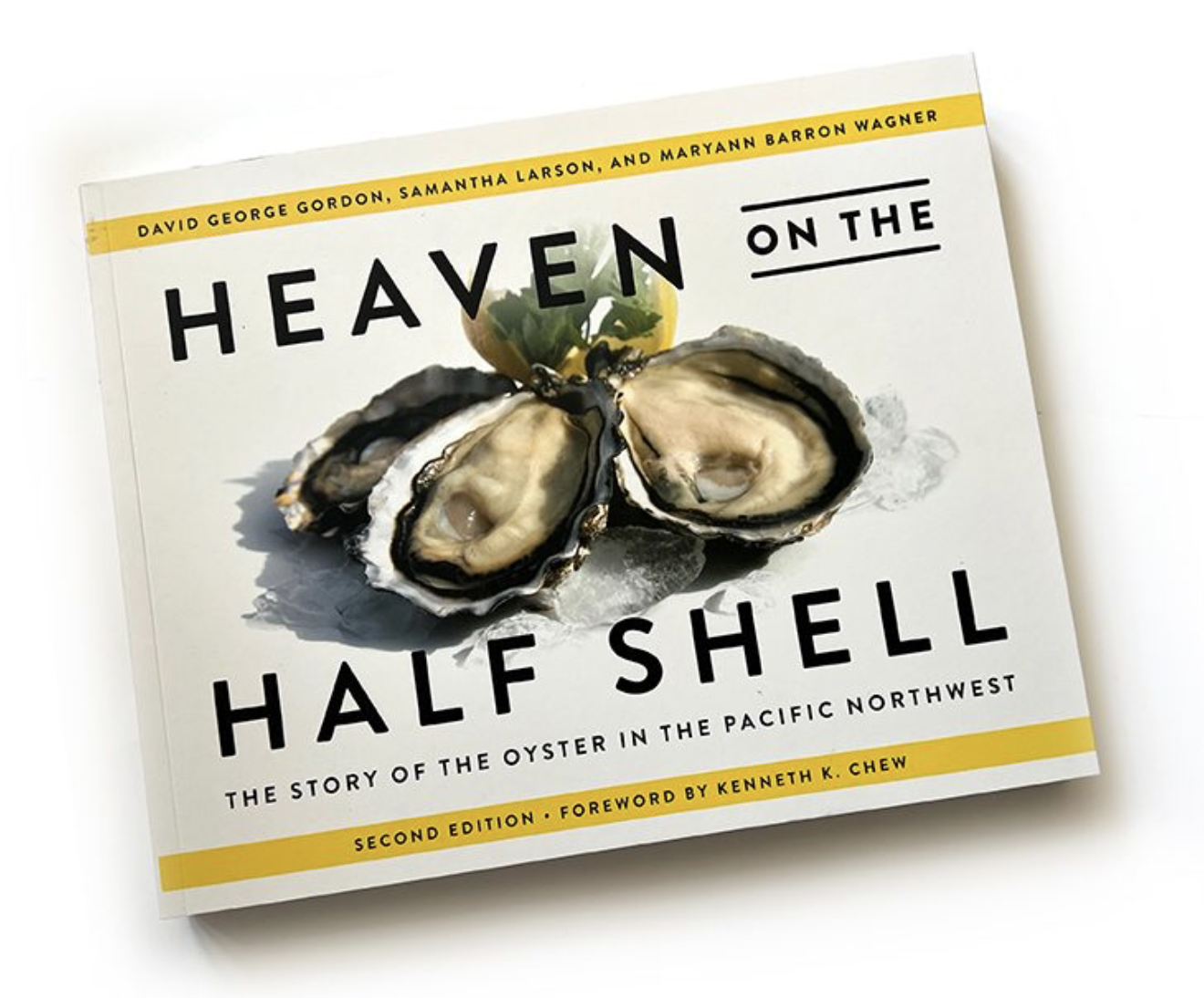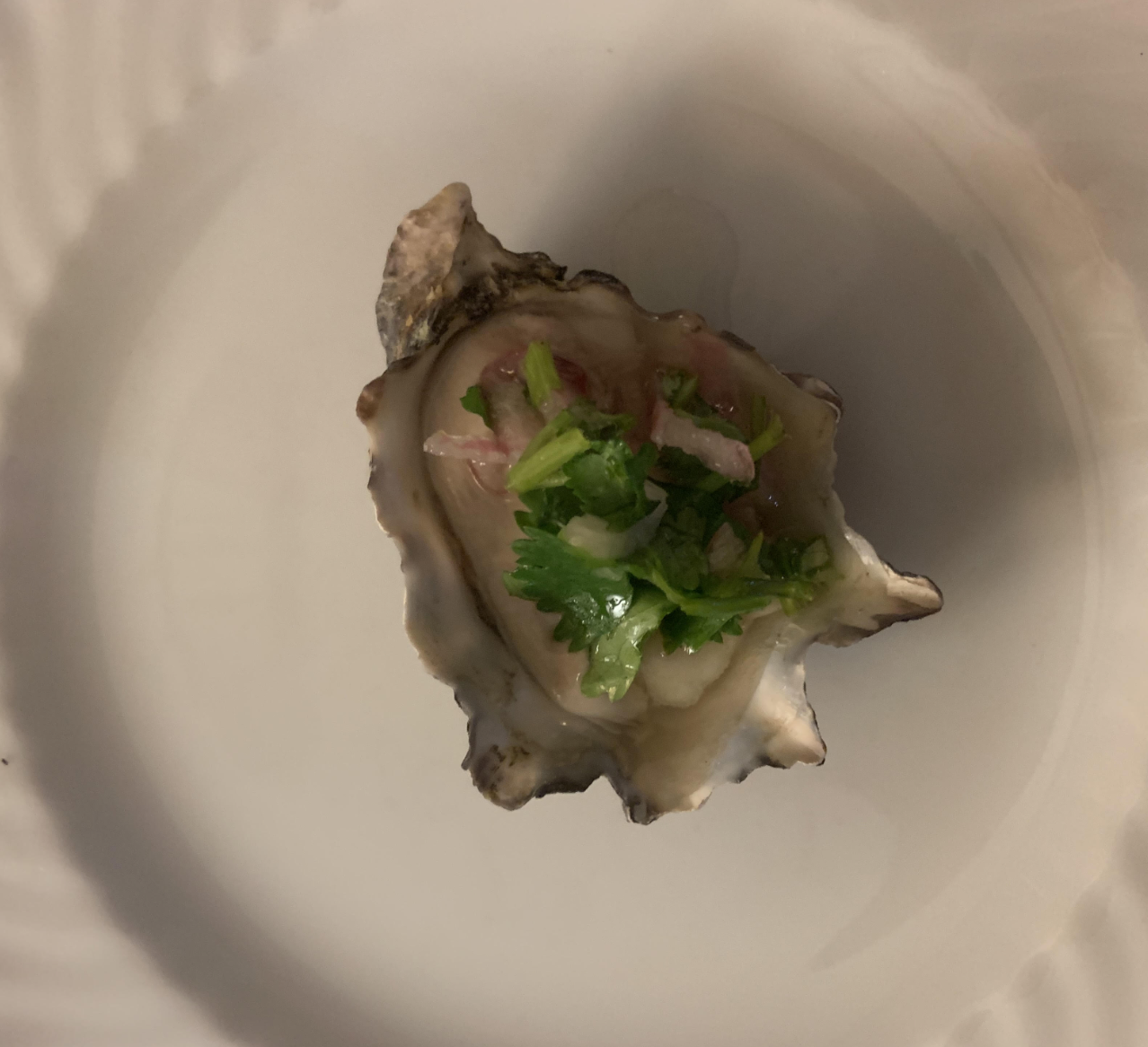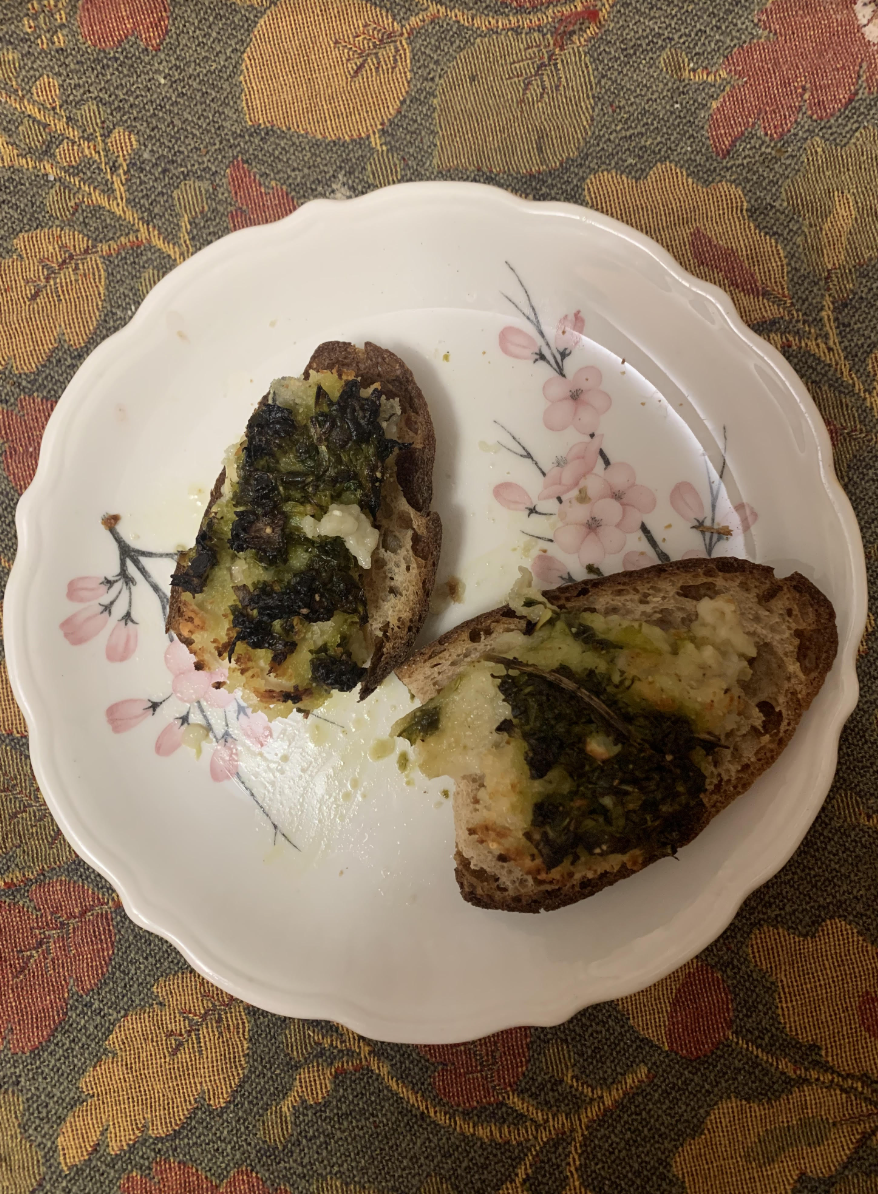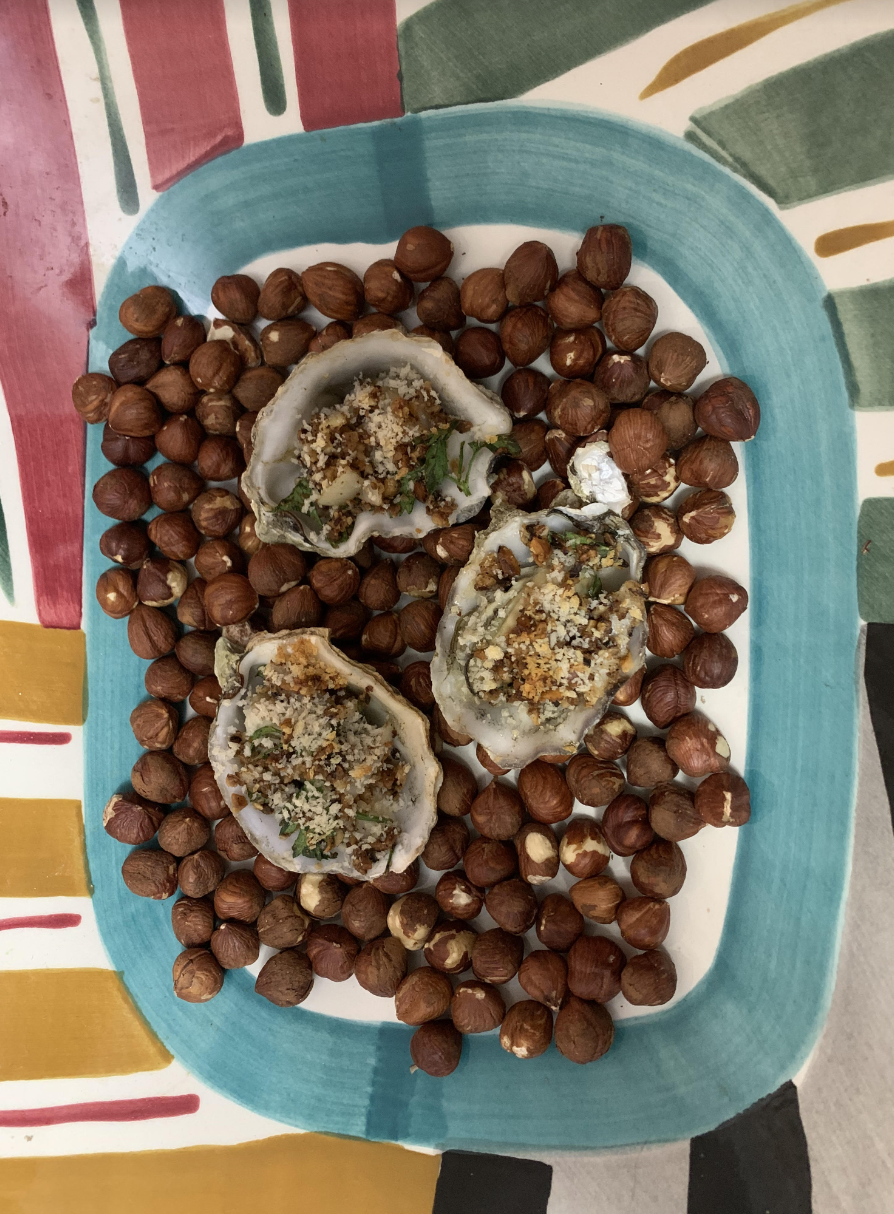
The cover of the newly released, second edition of Heaven on the Half Shell. Photo Credit: Washington Sea Grant, used with permission.
Oysters are beloved bivalves to our nearshore ecosystems and remain an important First Food for coastal Indigenous communities throughout the Pacific. Many of the Indigenous Aquaculture Network’s collaborators work to ensure abundant and healthy oysters to benefit their communities. From Mitchell Gibbs and the Gamay Rangers incorporating traditional knowledge into the management and restoration of oyster reefs in Australia, to Marco Hatch and collaborators leading research to understand historical Indigenous oyster management, and the Puget Sound Restoration Fund’s restoration aquaculture of the native Olympia oyster, it is clear that there are rich cultural connections between oysters and coastal communities.
Many of these deep rooted relationships and unique histories are explored in the recently released second edition of Heaven on the Half Shell. Written by Washington Sea Grant’s David George Gordon, Samantha Larson, and MaryAnn Barron Wagner, Heaven on the Half Shell is a deeply researched and creative book. The book highlights the accounts of diverse Indigenous and non-Indigenous oyster farmers and workers, uplifting their contributions and honoring their stories. Additionally, Heaven on the Half Shell sheds light on major milestones such as the 1994 Rafeedie decision that affirmed shellfish harvesting treaty rights held by Northwest Tribes. From the sea gardens and clam beds that began over 11,500 years ago, to the contemporary cultivation of oysters, this book celebrates the interwoven connection people have with these beloved bivalves in coastal British Columbia, Washington, Oregon, northern California, and southeastern Alaska.
In addition to providing this rich and informational history, Heaven of the Half Shell also serves as a cookbook. This month, we are celebrating the rerelease of this book, as well as new and delicious recipes inside. A few of the collaborators with the Cross-Pacific Indigenous Aquaculture Network contributed recipes for this second edition, and we are excited to share them with you all! Below are the recipes featured in the book from Lisa Barrell of the Jamestown S’Klallam Tribe, Azure Bouré of the Suquamish Tribe, and Myk Heidt with the Swinomish Indian Tribal Community who all lead traditional foods programs in their communities.
If you are interested in learning more about the book, two upcoming events in the Seattle area are being offered during the month of May:
Book reading at the University Bookstore – Tuesday May 16, 6pm
4326 University Way NE, Seattle, WA 98105
Book reading at Third Place Books (Seward Park) – Monday May 22, 7 pm
5041 Wilson Ave S, Seattle, WA 98118
Cilantro Mignonette

An oyster garnished with cilantro mignonette. Photo courtesy of MaryAnn Wagner.
This herby mignonette complements the freshly shucked oyster’s briny flavors, similar to another recipe by Lisa Barrell of the Jamestown S’Klallam Tribe, which has a kick of spice from adding a chopped jalapeño.
MAKES 12 SERVINGS
Ingredients:
⅓ cup rice vinegar
⅓ cup seasoned rice vinegar
2 tablespoons fresh-squeezed lime juice
½ bunch cilantro, chopped
1 finely chopped shallot
Instructions:
Mix ingredients together in a shallow bowl. Using a small spoon, serve over 12 freshly shucked oysters.
Azure’s Agatefellers

Azure’s Agatefellers on toast. Photo courtesy of MaryAnn Wagner.
Recipe reprinted courtesy of Azure Bouré, Traditional Foods and Medicine Program Coordinator, Suquamish Tribe, Indianola, Washington.
Agate Pass Pearls are tumbled oysters created with the aggressive flow of the cold, clean waters of Agate Pass in Central Puget Sound. These treasures are used in this version of a Rockefeller, using local ingredients native to the Northwest. The “pearls” are showered in fresh nutrients and cold salty water all day, making their flavors deliciously cool and clean with a hint of melon. As an oyster variety, the Agate Pass Pearl is new to the oyster scene. It is raised by Suquamish Seafoods and is the pride and joy of the Suquamish Tribe’s oyster farms.
MAKES 6 SERVINGS
Ingredients:
2 cloves garlic
1 cup tightly packed fresh nettles, blanched
½ cup roughly chopped green onions
½ cup roughly chopped parsley (including stems
and leaves)
2 teaspoons lemon juice
½ cup butter, softened
¾ cup panko breadcrumbs
¼ cup freshly grated Parmesan
1 tablespoon extra-virgin olive oil
1 pound coarse salt, for baking
24 fresh oysters, shucked, shells reserved
Lemon wedges
Instructions:
Position rack in top third of oven and preheat to 450 degrees F. Add garlic, nettles, green onions, parsley, lemon juice, and butter to a food processor and pulse until finely chopped. In a medium bowl combine panko, Parmesan, and oil. Sprinkle coarse salt over a large baking sheet to a depth of a half inch. Arrange oysters in half shells in the salt. Divide the nettle mixture among the oysters and sprinkle with Parmesan mixture. Bake until the nettle mixture is bubbling and the panko is deeply golden, about 8 to 10 minutes. Serve with lemon wedges.
Oysters Baked with Hazelnut-Herb Butter

Delicious oysters with hazelnut herb butter. Photo courtesy of MaryAnn Wagner.
Recipe reprinted courtesy of Michal (Myk) Heidt, Swinomish Indian Tribal Community, La Conner, Washington.
Try this alternative to the classic Oyster Rockefeller with hazelnuts, which are native to the Pacific Northwest. Myk Heidt, the recipe’s creator says, “I like to serve this dish when our families gather, especially in the fall and winter months in the Pacific Northwest. Most of my family live on Orcas Island, where the littles to grams and everyone else in between relish this dish. It is just lovely to serve over a bed of hazelnuts in the shell. The warm brown of the hazelnuts against the opaque white of the oyster shells is a beautiful contrast and reminds one of the sea to forest bounty and how well they complement each other.”
MAKES 4 TO 6 SERVINGS
Ingredients:
¼ cup skinned, toasted hazelnuts
2 teaspoons minced shallots
1 teaspoon fresh thyme leaves
2 tablespoons parsley leaves
½ teaspoon salt
¼ teaspoon pepper
1½ teaspoon lemon juice
½ teaspoon lemon zest
½ cup unsalted butter, softened to room temperature
1 to 2 bottles of beer
2 dozen medium-sized oysters
⅓ cup panko-style breadcrumbs
¼ teaspoon salt and freshly ground pepper
Instructions:
Preheat oven to 450 degrees F. Arrange the hazelnuts on a baking sheet and place on the middle rack in the oven to roast until the skins split and crisp up and the hazel- nuts are golden brown, approximately 10 minutes. Using a dish towel, rub the skins off. Next, pulse the hazelnuts in a food processor until finely chopped. Pour into a mix- ing bowl and set aside. Whirl the shallots and herbs in the food processor until you have a fine chop. Add the salt, pepper, lemon juice and zest with the butter. Blend and scrape the herb mixture into the bowl with the hazelnuts and mix well. Pour the beer into a stock pot and add the oysters. Bring to a boil over high heat, covered, then simmer until the oysters open. Stir once or twice. Toss out any oysters that didn’t open. Line a baking sheet with foil. Myk says, “Take the flattest shell off, leaving that fat little oyster in the deeper shell.” Top each with a dollop of hazelnut herbed butter. Sprinkle each oyster with a half teaspoon of bread crumbs, salt, and pepper. Bake until bubbling, crisp, and lightly browned, 5 to 10 minutes. Line a serving casserole with whole hazelnuts in shells. Using tongs, place the oysters atop the nuts.
Olivia Horwedel is the current Communications Fellow for the Cross-Pacific Indigenous Aquaculture Collaborative Network.
